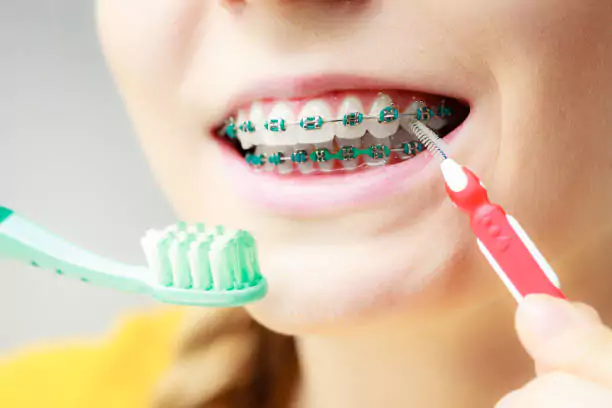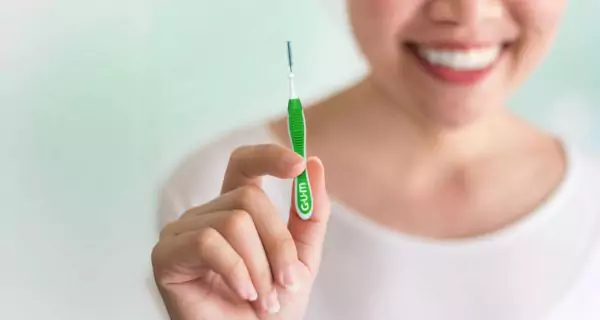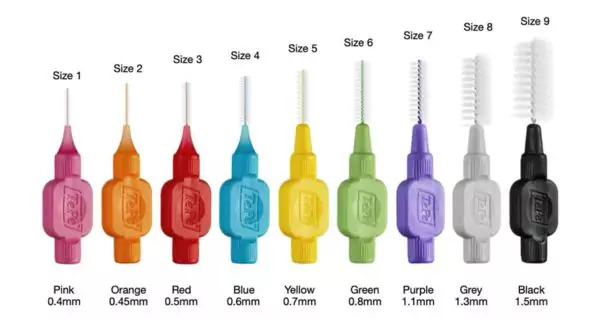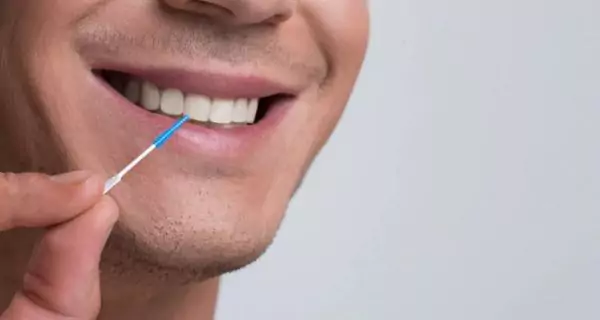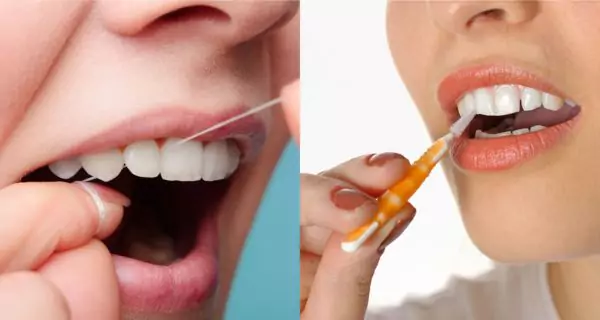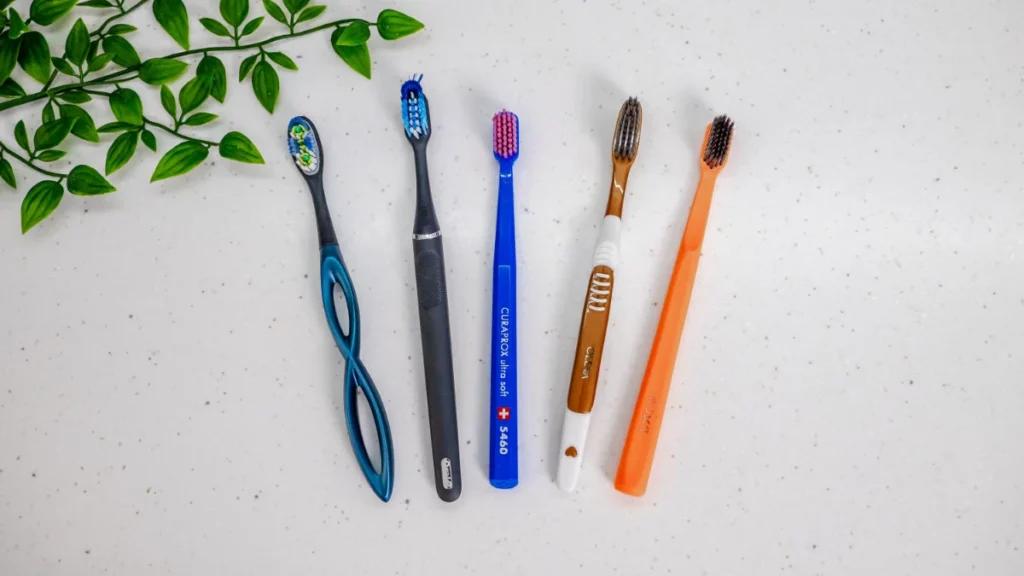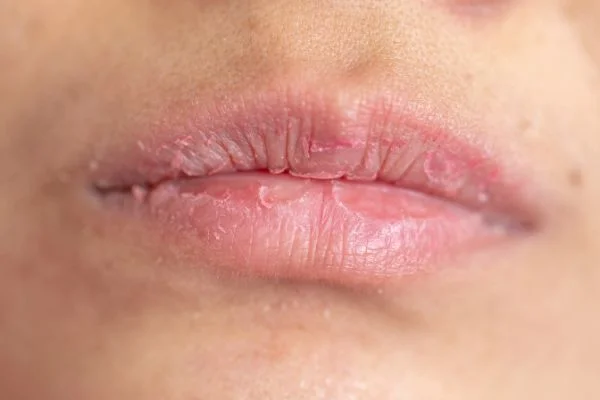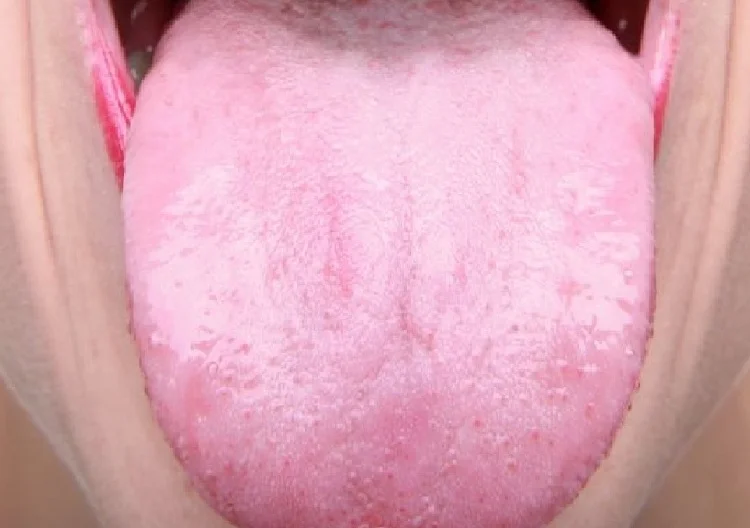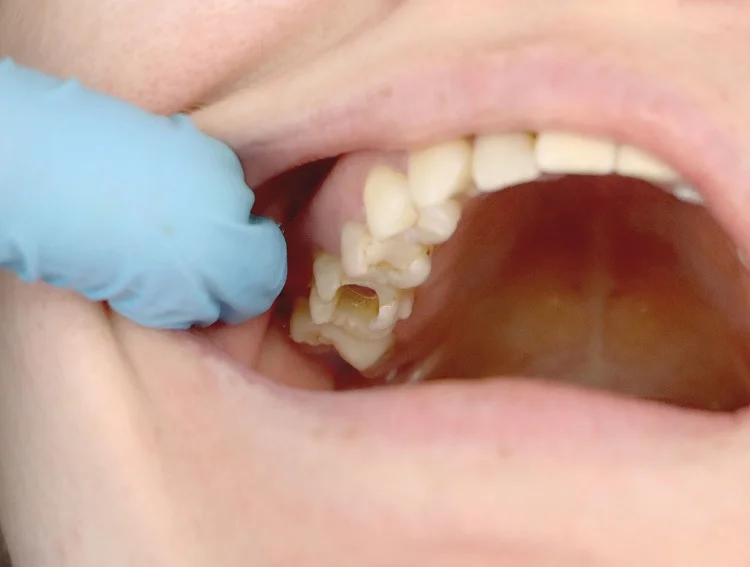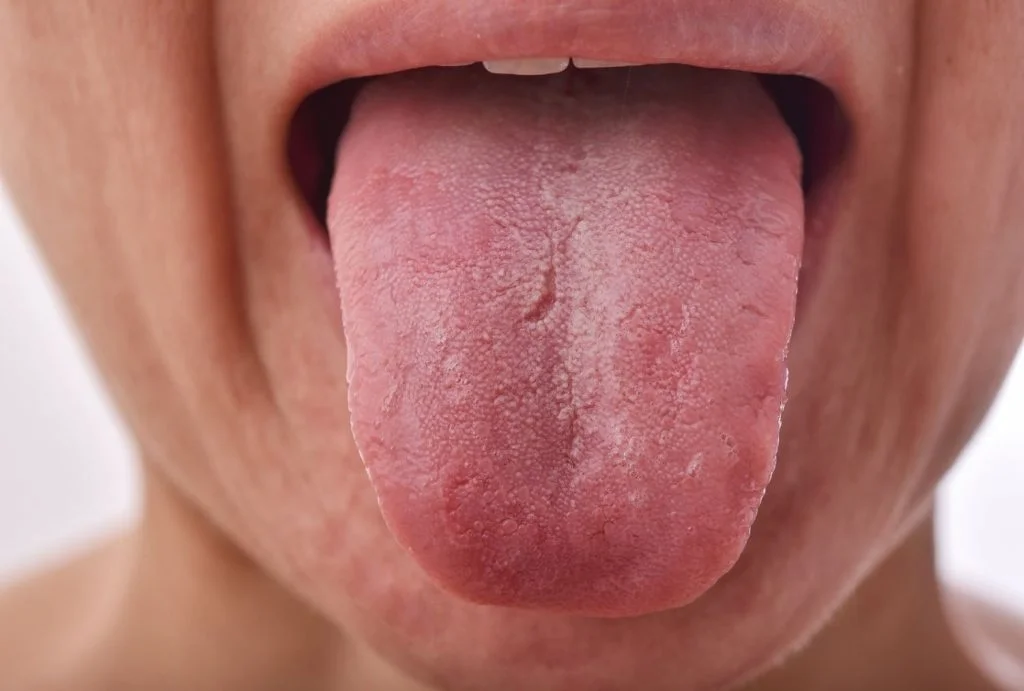Last Updated on: 19th September 2025, 12:31 pm
The best interdental brush is one that fits snugly between your teeth without needing to force it. Sizes vary depending on the gaps between your teeth — you may need different sizes for different areas of your mouth. Soft bristles and coated wires help protect your gums and dental work. Angled or flexible heads are great for reaching back teeth. For the best results, ask your dentist to recommend the ideal size and type for your needs.
Brushing your teeth is essential for good oral hygiene, but even the best toothbrush can’t reach every corner of the mouth. Between your teeth, tiny bits of food and plaque often build up; over time, this can lead to cavities, bad breath, or gum disease.
That’s where interdental brushes come in. These small, specialized brushes are designed to clean those tight and hard-to-reach spaces that your regular brush can’t access. They’re simple, effective, and an excellent way to take your daily cleaning routine to the next level.
With so many sizes, shapes, and types available, how do you know which interdental brush is right for you? Let’s see it.
What is an interdental brush?
Interdental brushes are small, cone-shaped, or cylindrical brushes made specifically for cleaning between teeth. They’re especially helpful if you have larger gaps, braces, implants, or dental bridges, where flossing alone may not be enough.
Why use an interdental brush?
Adding them to your daily routine offers some big benefits beyond what brushing and flossing alone can provide:
- Deep cleaning between teeth: these brushes reach into the sides of teeth and under the gum line, removing trapped food and reducing the risk of bacterial buildup.
- Prevention of gum inflammation: regular cleaning between teeth helps prevent gingivitis, the early stage of gum disease.
- Fresher breath: removing food debris from tight spaces also helps eliminate bad breath.
- Ideal for orthodontic patients: people with braces often find it hard to floss. Interdental brushes are easier to use and more effective for cleaning around wires and brackets.
They’re not a replacement for floss or brushing, but rather a complement, an extra step that can make a huge difference in your oral health.
How to choose the best interdental brush for you?
Not every interdental brush will work for every mouth. To get the most out of it, your brush should fit your teeth comfortably – not too tight and not too loose.
There’s a wide variety of brushes on the market, and choosing the right one depends on several factors.
Choosing based on brush type
Size matters
The brush head should fit snugly between your teeth without forcing it. A brush that’s too big can hurt your gums, while one that’s too small won’t clean effectively. Many people need different sizes for different areas of the mouth.
To help with sizing, most brands use color coding for easy identification:
- Pink (0.4 mm): ideal for extremely tight spaces between teeth.
- Orange (0.45 mm): suitable for slightly wider gaps, such as early gum recession.
- Red (0.5 mm): good for mild gum recession and small interdental spaces.
- Blue (0.6 mm): works well for medium gaps and early periodontal issues.
- Yellow (0.7 mm): best for moderate gum recession or larger spaces.
- Green (0.8 mm): perfect for people with braces or wider gaps.
- Purple (1.1 mm): Recommended for missing teeth or advanced gum loss.
- Gray (1.3 mm): For people with significant gum recession or dental implants.
- Black (1.5 mm): designed for very large gaps or extensive prosthetics.
While you can try different sizes at home, it’s best to ask your dentist which ones are right for you. Using the wrong size could lead to gum damage or poor cleaning.
Head shape and bristles
Brushes come with either straight or angled heads. The angled ones make it easier to reach your back teeth. Look for flexible heads and coated wires, which protect your gums and dental work.
Choose bristles that are:
- soft enough to avoid irritation
- firm enough to remove plaque
- well-positioned, so that only the bristles—not the wire—touch your teeth
Some brushes are treated with fluoride or chlorhexidine for extra antibacterial protection.
Handle design
Look for a brush with a comfortable, non-slip handle that’s easy to control. Some come with long or bendable handles to reach molars more easily.
Disposable or reusable?
Disposable brushes are great for on-the-go use, while reusable ones last longer with proper cleaning. Choose the option that fits your lifestyle and how much time you want to spend on brush maintenance.
Choosing based on age and dental needs
Your interdental brush should match your stage of life and dental condition:
- Children: Typically, interdental brushes are not needed unless the child wears braces. In these cases, use a soft, small-sized brush with adult supervision.
- Adults: Ideal for those with gum recession, restorations, or anyone looking to improve their cleaning routine.
- Seniors: Gum recession often increases with age, so larger brush sizes and soft bristles are typically recommended.
Best brands of interdental brushes
There are many great options out there. Here are some top-rated brands recommended by dentists:
- TePe: Swedish brand known for quality and variety with ergonomic designs make cleaning easy and gentle.
- GUM (Sunstar): great for people with braces or harder-to-reach areas, their brushes are flexible and comfortable.
- Oral-B: a brand trusted worldwide for its high-quality oral care products, including interdental brushes.
- DenTek: affordable and easy to use—excellent for those just starting with interdental cleaning.
- Curaprox: features ultra-soft bristles for gentle but thorough cleaning, perfect for sensitive gums.
Just remember that more important than the brand is how well the brush fits your mouth and how comfortable it feels in your hand.
How to use an interdental brush properly?
Using your brush the right way ensures you get the most benefit without damaging sensitive gum tissue.
Step-by-step guide
- Choose the right size: It should slide in gently between your teeth, snug, but not forced.
- Insert gently: Tilt the brush slightly and never push hard. If it doesn’t go in easily, try a smaller size.
- Move back and forth: Glide the brush in and out a few times to sweep out plaque and debris.
- Rinse and repeat: Rinse the brush after each use and clean all the spaces between your teeth.
- Dispose or clean: If it’s reusable, rinse well and let it dry before storing. If disposable, throw it away after use.
Cleaning and maintenance
Like any hygiene tool, your brush needs proper care:
- Rinse it well after every use to remove trapped food and bacteria
- Don’t share it with others
- Store it in a dry and clean place to prevent bacterial growth
- Replace it every 1–2 weeks, or sooner if the bristles are bent or worn
A worn-out brush won’t clean well, and worse, it could irritate your gums or spread bacteria. Keeping it clean and replacing it on time makes all the difference.
What extra tips can improve your oral care routine?
Your interdental brush is powerful, but it works best when used with other cleaning tools and regular dental check-ups.
Combining with other cleaning tools
- Floss: Use in areas where the brush doesn’t fit, especially in very tight spaces.
- Mouthwash: An antibacterial rinse helps reduce bacteria and freshens your breath.
- Electric toothbrush: Great for cleaning tooth surfaces more effectively than manual brushing.
Together, these tools form a routine that keeps your gums healthy, your teeth clean, and your breath fresh.
Visiting the dentist
Even if you’re doing everything right at home, regular dental visits are essential. Your dentist will:
- Check if you’re using the right brush size and technique
- Spot early signs of gum disease or decay
- Clean hard-to-reach areas professionally
Aim for at least two check-ups a year and ask for personalized advice based on your needs.
Interdental brushes are a small but powerful tool for better oral hygiene. Choosing the right size, using it regularly, and keeping it clean will make a real difference in the health of your gums and teeth.
Whether you wear braces, have sensitive gums, or just want to take your cleaning routine up a notch, this tiny brush can keep your smile bright and your mouth healthy for years to come.
And remember: if you’re not sure where to start, your dentist is your best guide. Don’t hesitate to ask for help choosing the best brush for you.
Frequently Asked Questions
Can interdental brushes replace floss?
How often should I use an interdental brush?
What do I do if the brush doesn’t fit between my teeth?
Are there eco-friendly interdental brushes?
How long should I use each brush during cleaning?
Voice and Search (Q&A)
What is an interdental brush used for?
An interdental brush is used to clean between your teeth where a regular toothbrush can’t reach. It helps remove food particles and plaque to prevent cavities and gum disease.
How do I choose the right size interdental brush?
Pick a size that fits snugly between your teeth without forcing it. If it’s too tight or too loose, ask your dentist for advice to avoid gum damage and ensure proper cleaning.
How often should I use an interdental brush?
Use an interdental brush once a day, ideally before or after brushing your teeth. Daily use helps keep your gums healthy and prevents plaque buildup.
Share
References
1. Bourgeois, D., Carrouel, F., Llodra, J., Bravo, M., & Viennot, S. (2015). A colorimetric interdental probe as a standard method to evaluate interdental efficiency of interdental brush. The Open Dentistry Journal, 9(1), 431–437. https://doi.org/10.2174/1874210601509010431
2. Christou, V., Timmerman, M. F., Van Der Velden, U., & Van Der Weijden, F. A. (1998b). Comparison of different approaches of interdental oral hygiene: interdental brushes versus dental floss. Journal of Periodontology, 69(7), 759–764. https://doi.org/10.1902/jop.1998.69.7.759
3. Liang, P., Ye, S., McComas, M., Kwon, T., Wang, C. W. (2021). Evidence-based strategies for interdental cleaning: a practical decision tree and review of the literature. Quintessence International, 52(1), 84–95. https://doi.org/10.3290/j.qi.a45268
4. Ng, E., & Lim, L. P. (2019). An Overview of Different Interdental Cleaning Aids and Their Effectiveness. Dentistry Journal, 7(2), 56. https://doi.org/10.3390/dj7020056
5. Rasines, G. (2009). The use of interdental brushes along with tooth brushing removes most plaque. Evidence-Based Dentistry, 10(3), 74. https://doi.org/10.1038/sj.ebd.6400666
-
Dr. Yeidy Carolina Mesa [Author]
DDS Yeidy Carolina Mesa Passionate Dentist | Advocate for Accessible Oral Health Education Graduating from Universidad CES in 2022, I am a dedicated general dentist with a lifelong passion for helping others and making a meaningful impact in the world. My journey into dentistry began at the age of 7, inspired by my own experience with braces and overcoming a fear of the dentist. This personal journey shaped my mission to help patients conquer their own dental anxieties and embrace a healthier,...
View all posts
-
Nayibe Cubillos M. [Medical Reviewer]
Pharmaceutical Chemestry |Pharmaceutical Process Management | Pharmaceutical Care | Pharmaceutical Services Audit | Pharmaceutical Services Process Consulting | Content Project Manager | SEO Knowledge | Content Writer | Leadership | Scrum Master
View all posts
A healthcare writer with a solid background in pharmaceutical chemistry and a thorough understanding of Colombian regulatory processes and comprehensive sector management, she has significant experience coordinating and leading multidisciplina...



